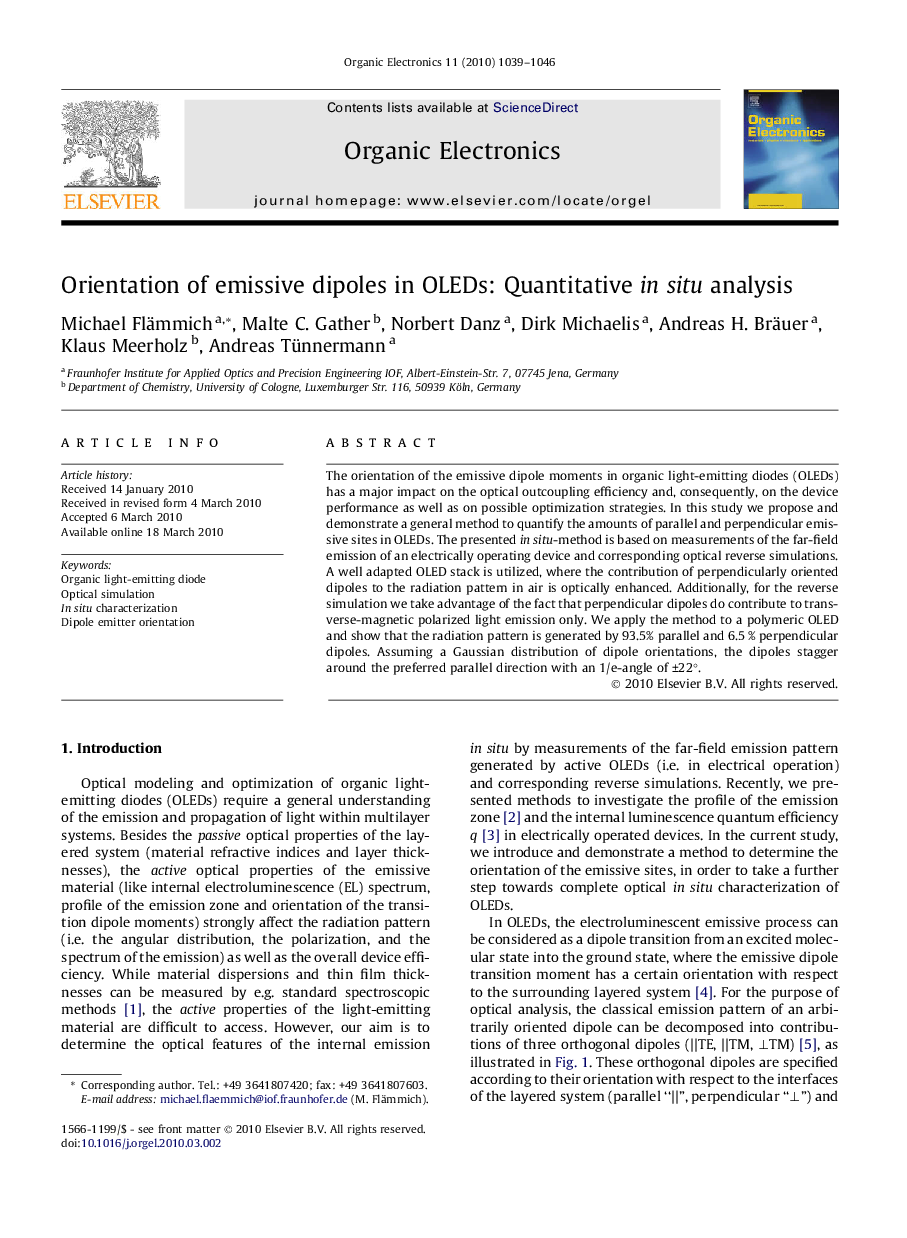| Article ID | Journal | Published Year | Pages | File Type |
|---|---|---|---|---|
| 1264183 | Organic Electronics | 2010 | 8 Pages |
The orientation of the emissive dipole moments in organic light-emitting diodes (OLEDs) has a major impact on the optical outcoupling efficiency and, consequently, on the device performance as well as on possible optimization strategies. In this study we propose and demonstrate a general method to quantify the amounts of parallel and perpendicular emissive sites in OLEDs. The presented in situ-method is based on measurements of the far-field emission of an electrically operating device and corresponding optical reverse simulations. A well adapted OLED stack is utilized, where the contribution of perpendicularly oriented dipoles to the radiation pattern in air is optically enhanced. Additionally, for the reverse simulation we take advantage of the fact that perpendicular dipoles do contribute to transverse-magnetic polarized light emission only. We apply the method to a polymeric OLED and show that the radiation pattern is generated by 93.5% parallel and 6.5 % perpendicular dipoles. Assuming a Gaussian distribution of dipole orientations, the dipoles stagger around the preferred parallel direction with an 1/e-angle of ±22°.
